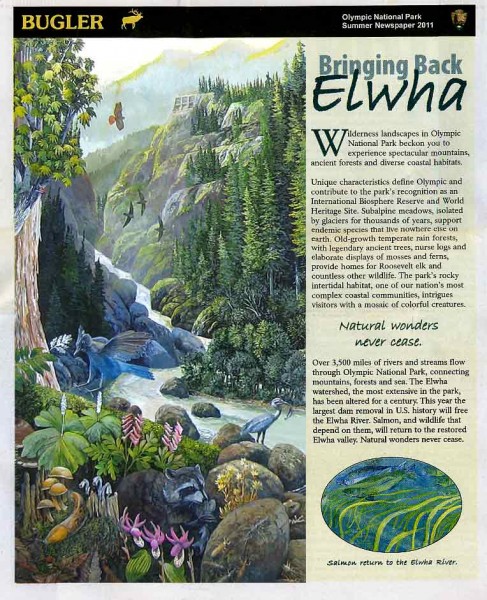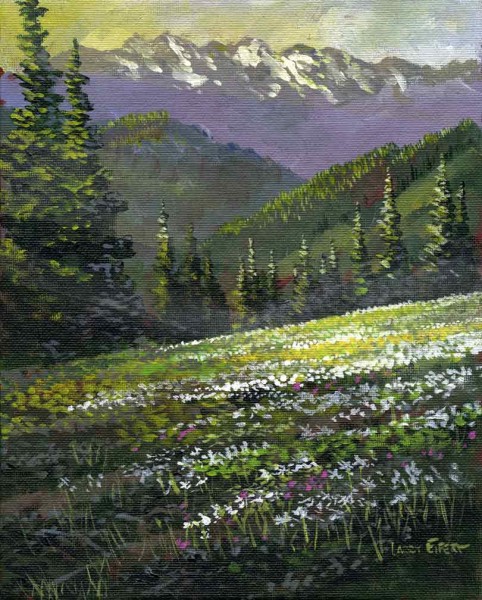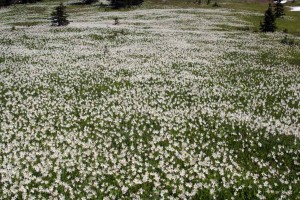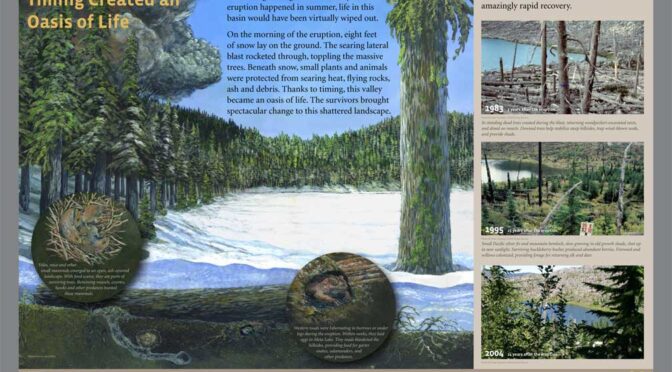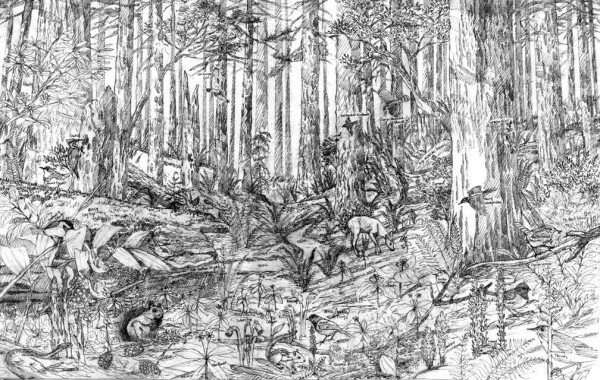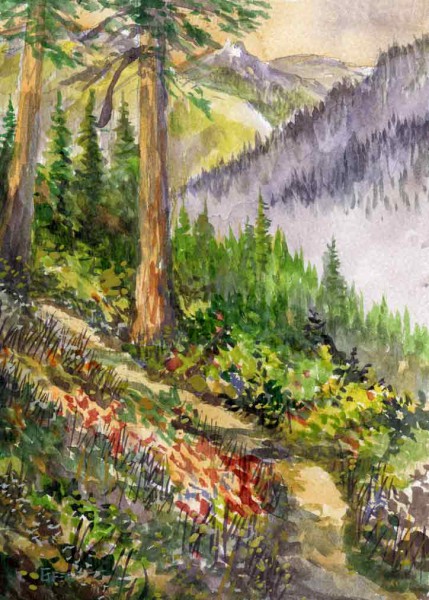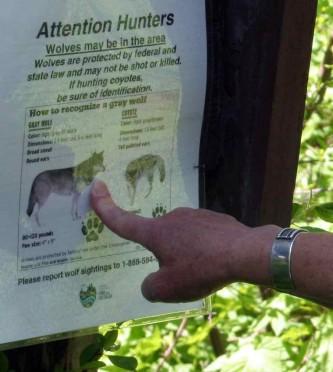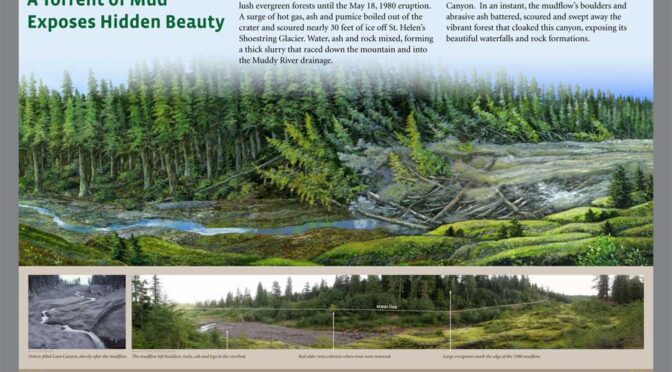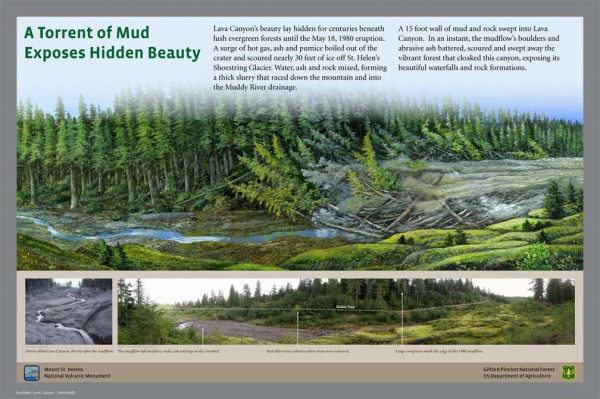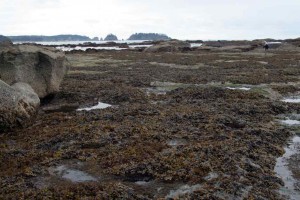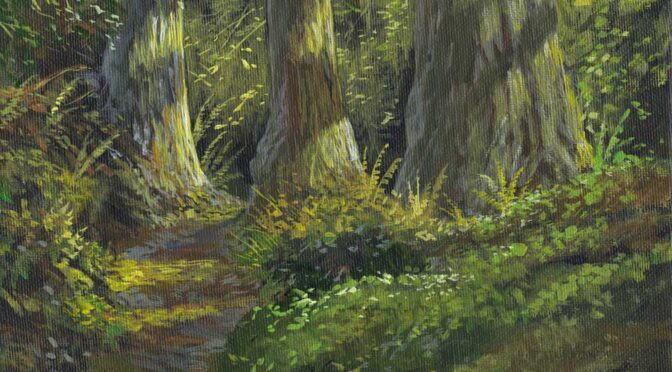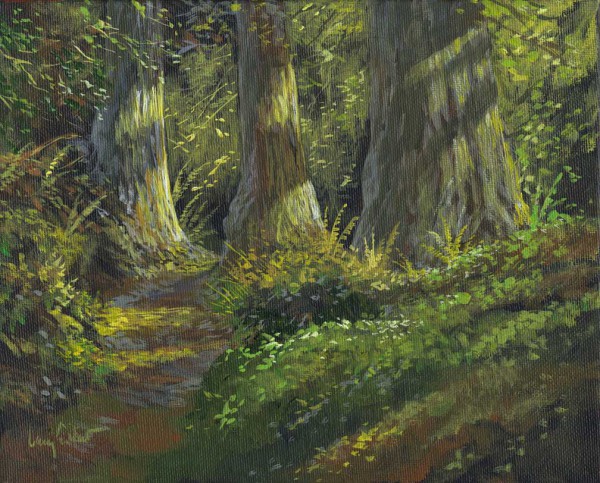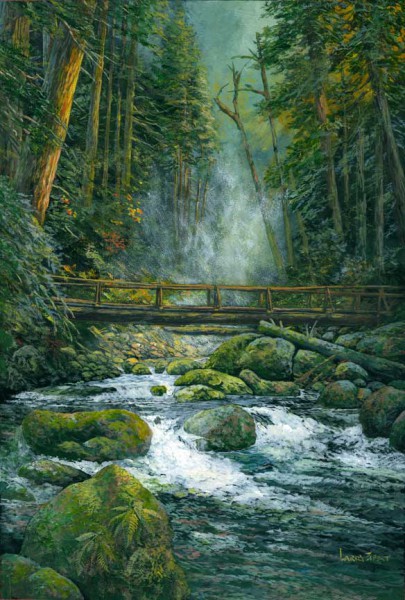Summer’s almost over and I almost forgot to post this while it’s still current.
On September 17, the official ceremony for the removal of the Elwha River dams will kickoff, but I’ve been involved with this for several years now. I was pleased when the park’s summer newspaper (the handout at the park gates) featured a section of one of the two murals I painted showing what this big river might look like a few years from now. In the upper left corner you can see what will remain of the upper Glines Canyon dam when the river will hopefully become one of the largest salmon producing streams (again) on the peninsula.
My task for these paintings was to show how the river and its salmon influence everything else there. Many plants and animals rely on a healthy salmon runs for nutrients. It’s not just the bears and raccoons, herons and jays that eat the spawned-out fish, but as they drag the fish into the forests, this soon becomes ‘fish emulsion’ for the big trees too. The forests provide a stable environment for a new generation of fish, while the fish give back fertilizer when they return. This cycle has been stopped for a full century by the two dams that will soon be gone.
And I’m affected too. Learning this stuff is the best part of painting nature for a living. It’s not just a painting, but more knowledge I get to cram under that size-8 1/4 hat.
Thanks for reading this week.
Larry Eifert
Click here to go to the online blog this was to.
Click here to go to our main website – packed with jigsaw puzzles, prints, interpretive portfolios and lots of other stuff.
Click here to check out what Nancy’s currently working on with her photography.
